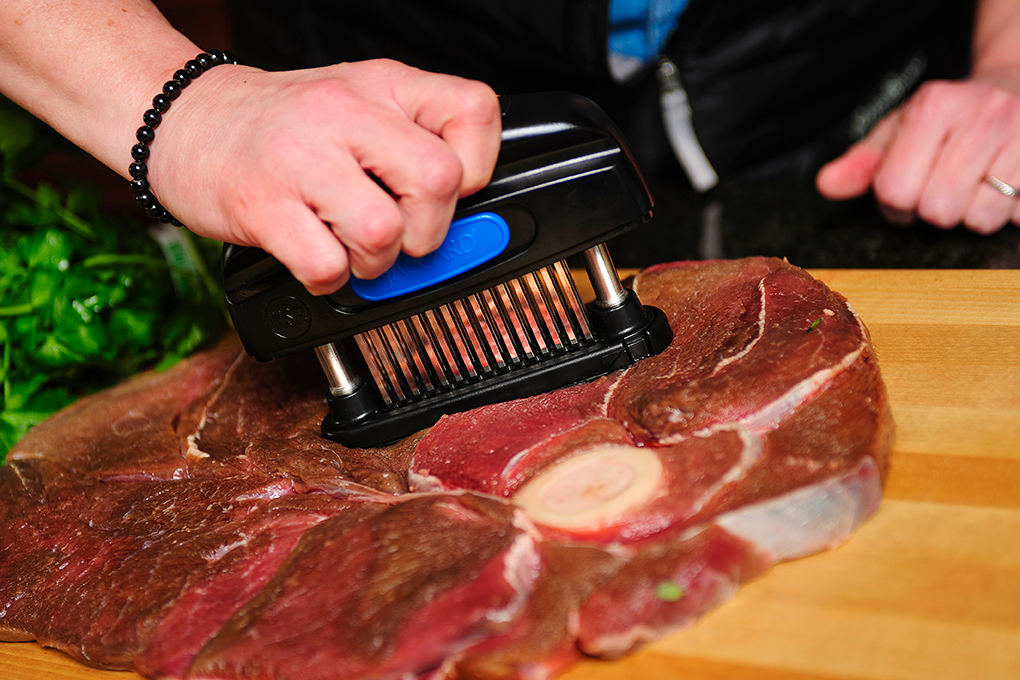How do I Use Meat Tenderizer? A Remarkable Guide for Barbecue Lovers!
Written By James Morgan
When it comes to creating the perfect barbecue experience, understanding how to use a meat tenderizer can be a total game-changer. Whether you're a novice griller or a seasoned pitmaster, the art and science of meat tenderization can bring your culinary skills to the next level. In this article, we'll delve deep into the unmissable secrets and methods to transform tough cuts into tender, mouth-watering masterpieces.

What is Meat Tenderizer?
A meat tenderizer is a tool or substance that softens the fibers of the meat, making it easier to chew and digest. Tenderizing can be achieved through mechanical means, chemical additives, or natural methods. Understanding the different types of meat tenderizers and their uses is key to mastering your grill game.
Types of Meat Tenderizers
- Mechanical tenderizers: These include tools like meat mallets, jaccard tenderizers, and tenderizing blades.
- Chemical tenderizers: These involve using enzymes such as bromelain (from pineapple) or papain (from papaya).
- Natural tenderizers: Substances such as vinegar, lemon juice, and baking soda.

Why Use Meat Tenderizer?
Using a meat tenderizer is crucial for achieving the right texture in your meats, especially when dealing with tougher cuts. Tenderizing meat not only makes it more palatable but also allows for better absorption of marinades and seasonings.

Steps to Use Mechanical Meat Tenderizers
Using a Meat Mallet
The most common mechanical tenderizer is the meat mallet. Heres how to use it effectively:
- Place the meat: Lay your meat between two pieces of plastic wrap or in a zip-lock bag. This will contain the mess.
- Pound the meat: Use the flat side of the mallet for chicken and fish, and the textured side for tougher meats like beef and pork.
- Consistency: Pound the meat evenly to ensure a uniform thickness.
Looking for more tips on using meat mallets? Check out this blog post on which side of the meat tenderizer to use.
Using a Jaccard Tenderizer
A Jaccard tenderizer pierces the meat with multiple small blades, cutting the muscle fibers. Heres how to do it:
- Place the meat: Lay your meat on a clean, flat surface.
- Apply the tool: Press the Jaccard tenderizer across the surface of the meat, covering all areas.
- Even pressure: Ensure even pressure to avoid over-tenderizing certain spots.
To know more about different tenderizer tools, visit this detailed guide.

Steps to Use Chemical Meat Tenderizers
Using Pineapple or Papaya
Chemical tenderizers break down proteins in the meat, making it more tender. Here's how you can use natural enzymes:
- Applying the Fruit: Spread crushed pineapple or papaya over the meat.
- Rest Time: Allow it to rest for 30 minutes to 2 hours, depending on the toughness of the meat.
- Rinse Off: Rinse the meat thoroughly to remove any excess fruit residue.
Get more insights on natural meat tenderizers by reading this informative article.
Common Mistakes and How to Avoid Them
Sometimes, even seasoned BBQ aficionados make mistakes when tenderizing meat. Here are some common pitfalls and how to sidestep them:
- Over-tenderizing: Whether youre using a mallet or a chemical tenderizer, overdoing it can turn your meat mushy.
- Uneven pressure: Inconsistent pounding or uneven application of the tenderizer can result in unevenly tender meat.
- Not enough rest time: Give your meat time to absorb the tenderizer before cooking.
Real-Life Tenderizing Techniques from Pitmasters
We spoke to some seasoned pitmasters to get their take on how they use meat tenderizers:
John, The Grill Master
I swear by my Jaccard tenderizer. Its quick and efficient. I've used it for years, and it never disappoints. Consistency is the key!
Mary, The Outdoor Chef
For tougher cuts, I use a mix of mechanical tenderizing and a pineapple marinade. The combination works wonders!
Want to delve deeper into pitmaster techniques? Check out this terrific guide.
FAQ
Can I use baking soda as a meat tenderizer?
Yes, you can use baking soda to tenderize meat. Sprinkle a moderate amount on the meat, let it sit for 15-20 minutes, then rinse thoroughly before cooking.
What are the best cuts of meat to tenderize?
Tougher cuts like flank steak, skirt steak, and certain cuts of pork benefit greatly from tenderizing.
How do I avoid over-tenderizing my meat?
Monitor the time and pressure applied, particularly with chemical tenderizers. Always follow guidelines based on the type of meat you're preparing.
As an Amazon Associate, I earn from qualifying purchases.
As an Amazon Associate, I earn from qualifying purchases.



